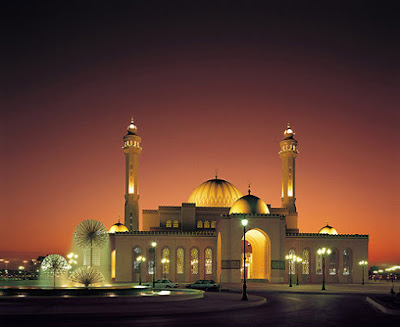Faisal Masjid (Pakistan)
Faisal Masjid (Pakistan)
It is the largest mosque in South
Asia and one of the largest mosques in the world, located in the Islamabad
capital city of Pakistan. In 1969, an international competition was held in
which architects from 17 countries submitted 43 proposals. The mosque was designed
by Turkish architect Vedat Dalokay (who won the Aga Khan Award for Architecture
with this project) to be shaped like a desert Bedouin's tent. The
mosque's architecture is modern and unique, lacking both the traditional domes
and arches of most other mosques around the world. The shape of the Faisal
Mosque is an eight-sided concrete shell inspired by a desert Beduoin's tent and
the cubic Kaaba in Mecca, flanked by four unusual minarets inspired by Turkish
architecture Completed in 1986. It is situated at the North end of the City and
at the Foot of Margalla Hills, the Westernmost Foothills of the Himalayas. It
is located on an elevated area of land against a picturesque backdrop of the
Margalla Hills. This enviable location represents the mosque's great importance
and allows it to be seen from miles around day and night. The Faisal Mosque is
conceived as the National Mosque of Pakistan and named after the late King
Faisal bin Abdul-Aziz of Saudi Arabia, who supported and financed the project.
The Faisal Mosque was the largest mosque in the world from 1986 until 1993,
when it was overtaken in size upon the completion of the Hassan II Mosque in,
Morocco. Subsequent expansions of the Masjid al-Haram and Masjid al-Nabawi
Saudi Arabia during the 1990s relegated Faisal Mosque to fourth place in terms
of size.

